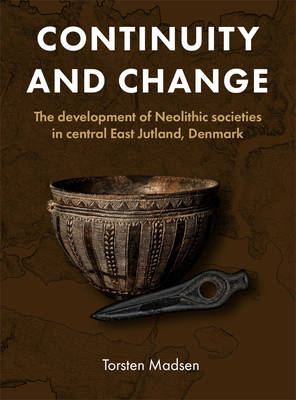
- Afhalen na 1 uur in een winkel met voorraad
- Gratis thuislevering in België vanaf € 30
- Ruim aanbod met 7 miljoen producten
- Afhalen na 1 uur in een winkel met voorraad
- Gratis thuislevering in België vanaf € 30
- Ruim aanbod met 7 miljoen producten
Zoeken
Continuity and Change
The Development of Neolithic Societies in Central East Jutland, Denmark
€ 113,95
+ 227 punten
Omschrijving
Based on the extensive collection and systematic analysis of data from a limited area in the eastern part of the Jutland peninsula in Denmark, this book focuses on revealing the cultural development during the Neolithic period (3900-1700 BC) within this area. For each timespan, the development of the land use, ritual sphere and social structure are examined. The analysis of the collected data is undertaken in association with relevant data from other parts of South Scandinavia, to support the basis of information as well as to illuminate the connections with other areas. Based on the results obtained and in the context of the rest of South Scandinavia, a synthesis of the cultural development in the study area is presented, which also identifies relevant links to other parts of Northern Europe. The results also show, for example, how the social order collapsed during the later part of the period and a 'modern' agricultural system emerged, in which farming was no longer adapted to the natural environment, but created its own one. Settlement-archaeological studies such as this are not common, and make a rare and ground-breaking contribution to the understanding of a subject that is enthusiastically discussed in archaeological research in both Denmark and the rest of Northern Europe. I
Specificaties
Betrokkenen
- Uitgeverij:
Inhoud
- Aantal bladzijden:
- 532
- Taal:
- Engels
- Reeks:
- Reeksnummer:
- nr. 128
Eigenschappen
- Productcode (EAN):
- 9788793423541
- Verschijningsdatum:
- 23/01/2025
- Uitvoering:
- Hardcover
- Formaat:
- Genaaid
- Afmetingen:
- 211 mm x 282 mm
- Gewicht:
- 2472 g

Alleen bij Standaard Boekhandel
+ 227 punten op je klantenkaart van Standaard Boekhandel
Beoordelingen
We publiceren alleen reviews die voldoen aan de voorwaarden voor reviews. Bekijk onze voorwaarden voor reviews.







